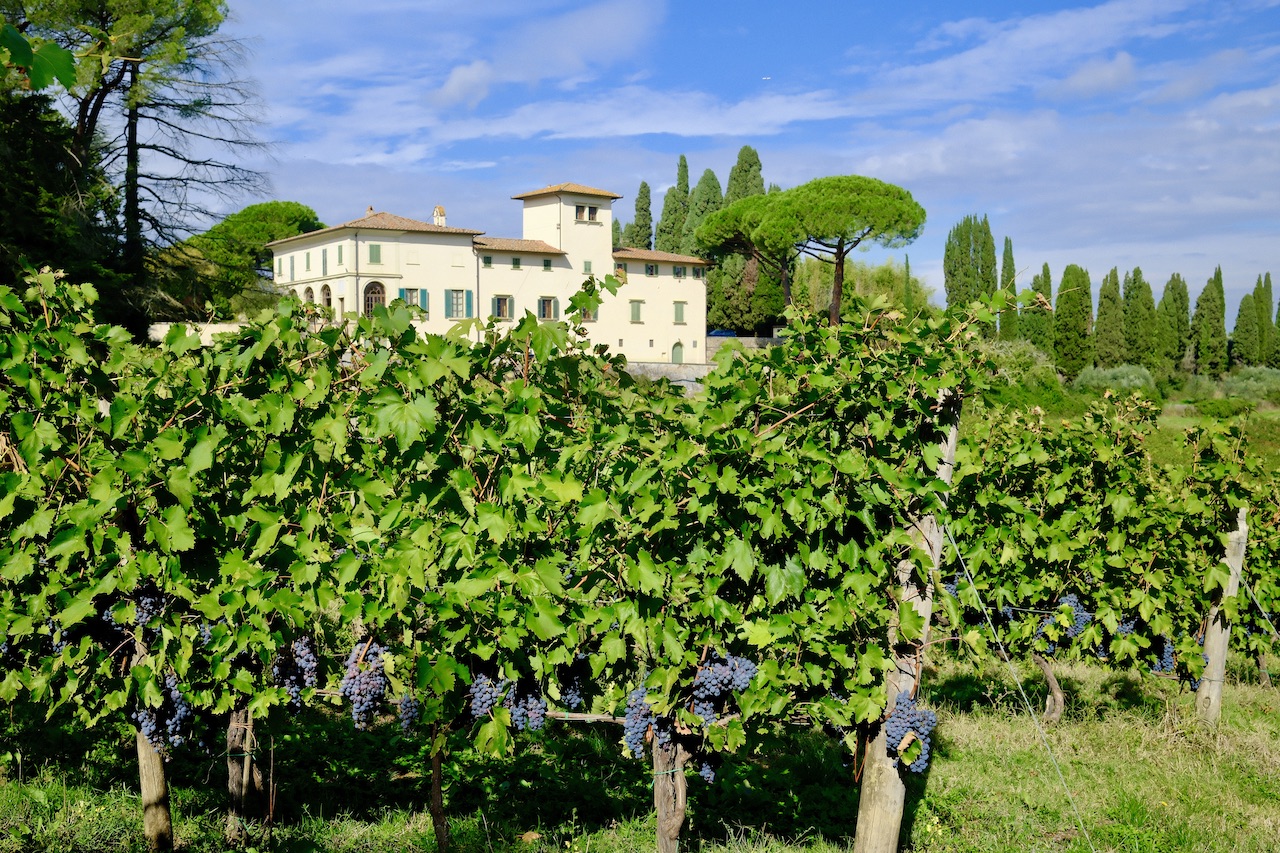Wine Tours in Tuscany - About Angie - +39 3333185705 - angie.chianti@gmail.com
So there we were. Two pals in a Florentine wine bar (Enoteca), putting the world to rights over, of course, a couple of glasses of red. “Tell me,” enquires my companion, “what is the difference between Peter Parker and Spiderman?” “A red and blue costume” I say. But then I think… is that true? Only when dressed as Spiderman, is he imbued with special powers? Are those powers associated with him only when he looks like Spiderman? Would anyone take him seriously if he tried to act as Spiderman without being Spiderman? Surely not, or….
The super-power of Chianti
I fell silent and stared into the wine. A Chianti. So called as it is made from grapes grown in that eponymous wine-heartland of central Italy (mostly) to the south of Florence; an area that conjures up images of flat-cap wearing peasants quaffing from wicker-basketed bottles (‘fiaschi’), in the shade of an olive grove. No doubt somewhere off a cypress-tree lined lane leading to a rustic, sun-burnished farmhouse where Mamma is busy preparing ‘gnocchi’ for lunch….
And this is true. It exists! And so, as you sup the wine (wherever in the world you are), those earthy, herbal yet red-fruity qualities immerse you in a dreamscape of terracotta days and balmy, pasta-fuelled nights; a place where da Vinci, Michelangelo and Brunelleschi conjured up their magic; the movie-set world of ‘Stealing Beauty’, ‘Under the Tuscan Sun’ and ‘A Room with a View’. Such is the super-power of Chianti, the wine.
But what is the reality?
The Wizard of Oz behind the curtain. The Peter-Parker-ness of it all. Well, that lies within the grape variety, Sangiovese. In Latin, Sanguis Jovis: Jupiter’s Blood.
Sangiovese is the most planted grape variety in Italy and dates (as its Latin name suggests) back to Roman viniculture and beyond. Prevalent as it is in Central Italy, it forms the backbone of the wine industry in this area with wines such as Brunello di Montalcino and Rosso di Montalcino relying 100% on Sangiovese grapes.
Chianti, however, doesn’t. It is, more often than not, a blend with up to 20% given over to other (local, of course!) varietals – including whites – to bring in hints of alternative aspects of the Chianti terroir. Fancy a bit of savoury to counteract all that blackcurrant and plum? Then a dash of Canaiolo gives that sun-dried tomato taste. Meanwhile, other Chianti producers may decide to ‘flesh out’ their wines with some Cabernet Sauvignon or Merlot.
The result of all this is a bringing together of various tastes and virtues that best reflect the qualities of the Chianti region.
So what’s in a name.. Sangiovese and Chianti?
Well, according to the Italian Government, that is. For it is they who decide whether a wine is eligible to be considered DOC (Denominazione di origine controllata) or DOCG (Denominazione di origine controllata e garantita) – the marks of quality assurance for Italian wines since the early 1960s. Add to this the matter of what ‘sub-zones’ are allowed to be included under the Chianti umbrella (there are 8, including the original Chianti Classico), then things begin to get a little complicated…
Sure, it’s difficult to see where one Chianti ends and another begins, but let’s face it: it doesn’t matter. After all, in Silence of the Lambs, Hannibal Lecter, that most discerning of gourmets, didn’t eat his victim with fava beans and “a glass of sangiovese blended with 10% Syrah”. The words ‘a nice Chianti’ were enough.
So, to answer the question: Sangiovese is the heart and soul of the wine: the liquid that hits the tastebuds and giddies the head. But the name ‘Chianti’ is what stirs the imagination. Put these two together and that’s a mighty force.





